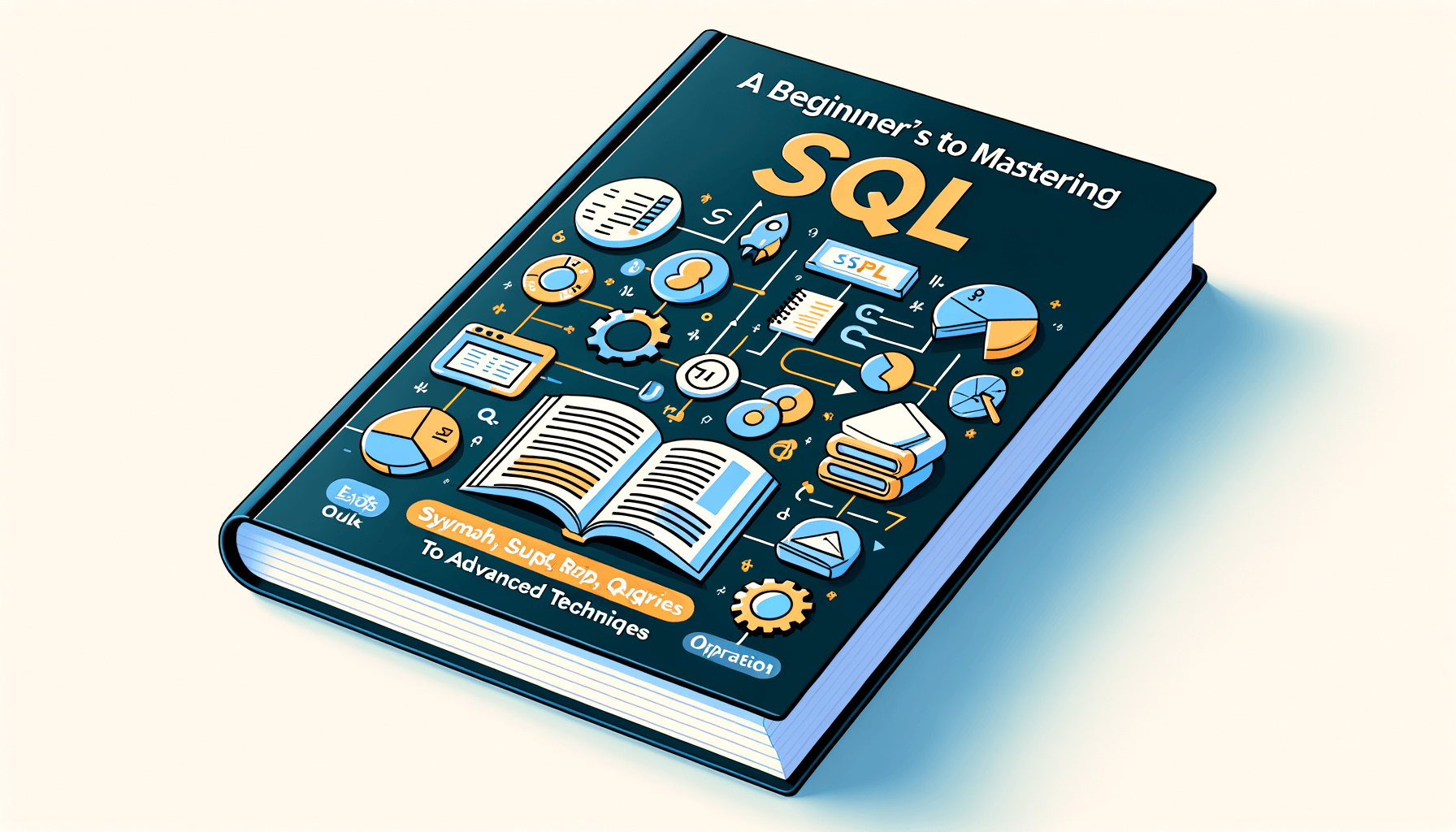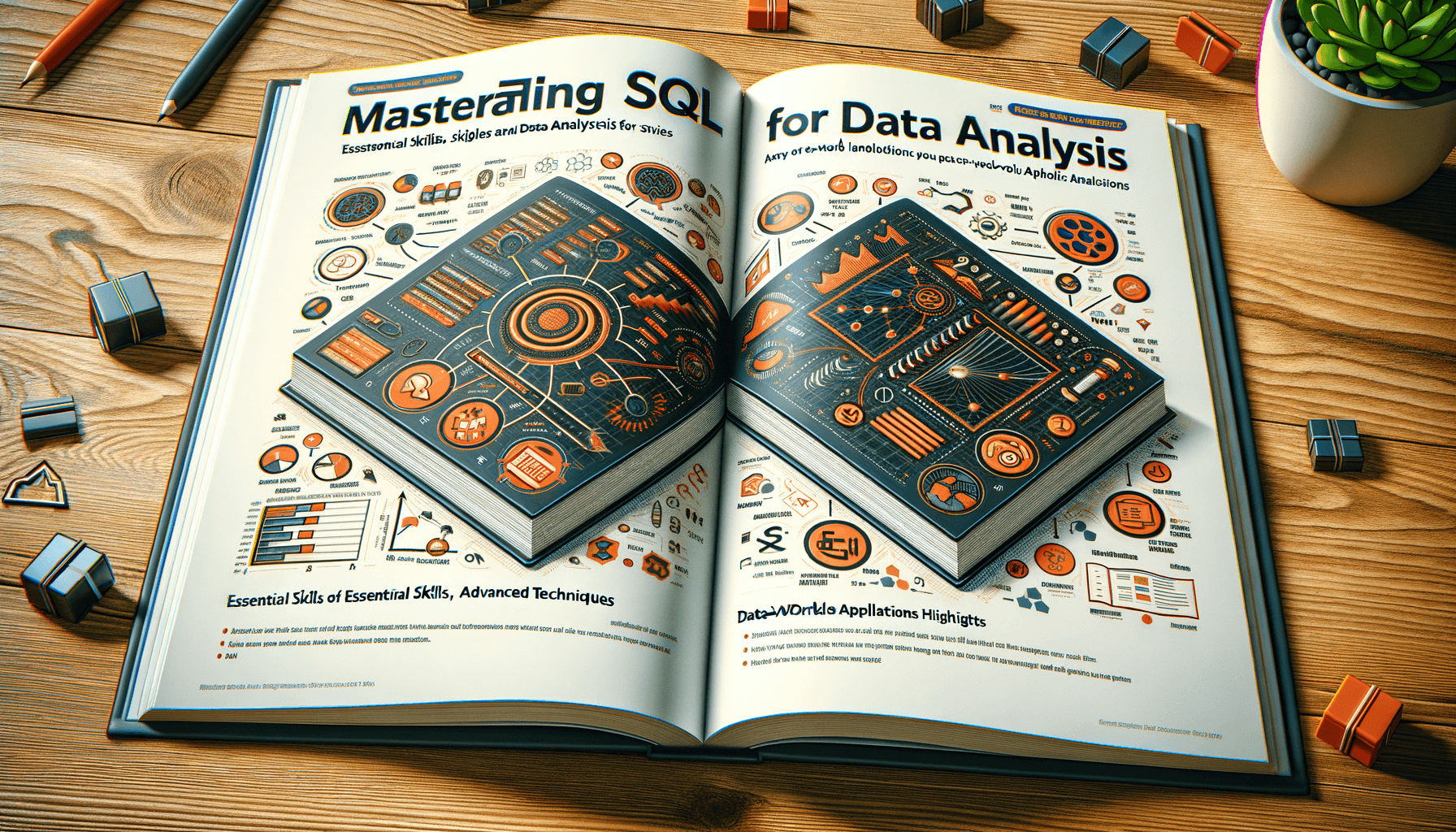A big variety of articles and resources

Learn SQL for Beginners Free: A Comprehensive Guide to Kickstart Your Database Journey
 Sia Author and Instructor
Learn SQL
Sia Author and Instructor
Learn SQL
9 minute read
Starting your journey with SQL can open many doors in the world of data and databases. SQL, or Structured Query Language, is the standard way to interact with databases and manage data. This guide is perfect for beginners who want to learn SQL for free and build a strong foundation for future learning.
Key Takeaways
- SQL is essential for managing and interacting with databases.
- Basic SQL commands are easy to learn and use.
- Understanding SQL basics can lead to more advanced database skills.
- SQL knowledge is valuable in many tech and data-related careers.
- There are plenty of free resources to help you learn SQL.
Understanding SQL and Its Importance
What is SQL?
SQL, or Structured Query Language, is a standard language used to communicate with databases. It allows us to create, read, update, and delete data stored in a database. SQL is essential for managing and manipulating data efficiently.
The Role of SQL in Databases
SQL plays a crucial role in databases by enabling users to perform various operations on data. It helps in organizing and retrieving data, making it easier to analyze and understand. SQL is widely used in different fields, including business, healthcare, and education.
Why Learn SQL?
Learning SQL is important because it opens up numerous opportunities in the tech industry. Whether you want to become a data analyst or a software developer, SQL skills are highly valued. Additionally, SQL is relatively easy to learn, making it accessible for beginners.
Getting Started with SQL Basics
Setting Up Your SQL Environment
Before diving into SQL, we need to set up our environment. This involves installing a database management system (DBMS) like MySQL or PostgreSQL. These tools allow us to create and manage databases. No credit card required to get started with many of these tools, making it easy to begin learning.
Basic SQL Syntax and Commands
Understanding the basic syntax and commands of SQL is crucial. SQL uses simple, English-like statements to interact with databases. Here are some fundamental commands:
- SELECT: Retrieves data from a database
- INSERT: Adds new data to a database
- UPDATE: Modifies existing data
- DELETE: Removes data from a database
Executing Your First SQL Query
Executing your first SQL query is an exciting step. Start with a simple SELECT statement to fetch data from a table. For example:
SELECT * FROM users;
This command retrieves all records from the 'users' table. Practicing these commands helps build a strong foundation in SQL.
Learning SQL basics for beginners at your own pace is essential. It allows you to grasp the concepts without feeling rushed or overwhelmed.
Core SQL Concepts for Beginners
Data Types and Structures
Understanding data types and structures is fundamental in SQL. Data types define the kind of data that can be stored in a table column, such as integers, text, or dates. Structures refer to how data is organized within the database. Knowing these basics helps in designing efficient databases and writing accurate queries.
SQL Operators and Expressions
SQL operators and expressions are used to perform operations on data. Operators like =, >, and < are used in conditions to filter data. Expressions combine operators and values to produce a result. Mastering these tools is essential for querying and manipulating data effectively.
Introduction to SQL Functions
SQL functions are built-in operations that perform calculations on data. Common functions include SUM(), AVG(), and COUNT(). These functions simplify complex queries and make data analysis more efficient. Learning to use SQL functions can greatly enhance your ability to work with databases.
Grasping these core concepts is crucial for anyone starting their journey in SQL. They form the foundation upon which more advanced topics are built, making it easier to progress in your learning.
Working with SQL Tables
Creating and Modifying Tables
When we start working with SQL, one of the first things we need to learn is how to create and modify tables. Tables are the backbone of any database. They store the data in a structured format, making it easy to retrieve and manipulate. To create a table, we use the CREATE TABLE statement, followed by the table name and the columns we want to include. For example:
CREATE TABLE Students ( StudentID int, FirstName varchar(255), LastName varchar(255), EnrollmentDate date );
To modify an existing table, we use the ALTER TABLE statement. This can be used to add, delete, or modify columns in a table. For instance, to add a new column to the Students table, we would write:
ALTER TABLE Students ADD Email varchar(255);
Inserting, Updating, and Deleting Data
Once our tables are set up, we need to know how to insert, update, and delete data. The INSERT INTO statement allows us to add new rows to a table. For example:
INSERT INTO Students (StudentID, FirstName, LastName, EnrollmentDate) VALUES (1, 'John', 'Doe', '2023-09-01');
To update existing data, we use the UPDATE statement. This lets us change the values in one or more columns for rows that meet certain conditions. For example, to update the email address of a student, we would write:
UPDATE Students SET Email = '[email protected]' WHERE StudentID = 1;
If we need to remove data from a table, we use the DELETE FROM statement. For instance, to delete a student record, we would write:
DELETE FROM Students WHERE StudentID = 1;
Querying Data from Tables
Querying data is one of the most important tasks in SQL. We use the SELECT statement to retrieve data from one or more tables. The basic syntax is:
SELECT column1, column2 FROM table_name;
We can also use various clauses to filter, sort, and group the data. For example, to get a list of all students enrolled after a certain date, we would write:
SELECT FirstName, LastName FROM Students WHERE EnrollmentDate > '2023-01-01';
By mastering these basic operations, we can effectively manage and manipulate data in our SQL databases.
Advanced SQL Topics for Continued Learning
Joins and Subqueries
Understanding joins and subqueries is crucial for working with complex databases. Joins allow us to combine data from multiple tables based on a related column, while subqueries let us nest queries within other queries. Mastering these concepts will enable us to handle more sophisticated data retrieval tasks.
Indexes and Performance Optimization
Indexes are special database objects that improve the speed of data retrieval. By learning how to create and use indexes effectively, we can significantly enhance the performance of our SQL queries. Performance optimization involves various techniques to ensure our database runs efficiently, even as it grows.
Stored Procedures and Triggers
Stored procedures are precompiled collections of SQL statements that can be executed as a single unit, while triggers are special types of stored procedures that automatically execute in response to certain events on a table. These tools are essential for automating tasks and maintaining data integrity in our databases.
Jumpstart SQL: Free Introductory Lessons provide a foundation for future learning, practical projects, expert-led training, and hands-on projects.
Practical Applications of SQL
Real-World SQL Use Cases
SQL is used in many real-world scenarios, from managing customer data to tracking inventory. Mastering SQL can help you solve real-world problems efficiently. For instance, businesses use SQL to analyze sales data and make informed decisions. Hospitals use it to manage patient records, ensuring data is accurate and accessible.
SQL in Data Analysis and Reporting
In data analysis, SQL is a powerful tool. Analysts use SQL to extract and manipulate data, creating reports that help businesses understand trends and patterns. With SQL, you can join tables, filter data, and perform calculations, making it easier to generate meaningful insights.
SQL for Web Development
Web developers often use SQL to interact with databases. Whether it's retrieving user information or storing new data, SQL is essential for dynamic websites. By integrating SQL with web technologies, developers can create robust applications that handle data efficiently.
SQL is not just a query language; it's a vital skill for anyone working with data. From data analysis to web development, SQL opens up numerous opportunities.
Resources for Learning SQL for Free
Online Courses and Tutorials
There are numerous online platforms offering free SQL courses. Websites like Codecademy, Khan Academy, and Coursera provide beginner-friendly tutorials. These courses often include interactive exercises to help you practice as you learn.
Books and Publications
For those who prefer reading, there are several free eBooks and online publications available. Titles like "SQL for Dummies" and "Learn SQL The Hard Way" are excellent starting points. Many of these resources are available in PDF format for easy access.
Community Forums and Support
Joining online communities can be incredibly beneficial. Websites like Stack Overflow, Reddit, and SQLServerCentral have active forums where you can ask questions and share knowledge. Engaging with these communities can accelerate your learning process.
Tip: Don't hesitate to ask questions in forums. The SQL community is generally very supportive and eager to help beginners.
Looking to learn SQL without spending a dime? Our website offers a variety of free resources to help you get started. From beginner-friendly tutorials to advanced lessons, we have everything you need to master SQL. Don't wait any longer, visit us today and start your learning journey!
Conclusion
In conclusion, learning SQL is an essential skill for anyone interested in data management or technology. This guide has provided you with a solid foundation to start your journey. By mastering the basics, you can open doors to more advanced topics and career opportunities. Remember, the key to success is practice and continuous learning. Don't hesitate to revisit the lessons and challenge yourself with real-world problems. With dedication and effort, you'll soon find yourself proficient in SQL, ready to tackle complex data tasks with confidence.
Frequently Asked Questions
What is SQL?
SQL stands for Structured Query Language. It's a programming language used to manage and manipulate databases.
Why should I learn SQL?
Learning SQL is important because it allows you to interact with databases. It's a key skill for many jobs in tech, data analysis, and web development.
Is SQL hard to learn?
SQL is considered one of the easier programming languages to learn. With practice, you can quickly become proficient.
Do I need any prior knowledge to start learning SQL?
No, you don't need any prior knowledge to start learning SQL. It's designed to be beginner-friendly.
Where can I practice SQL for free?
You can practice SQL for free on various online platforms like SQLZoo, W3Schools, and Codecademy.
How long does it take to learn SQL?
The time it takes to learn SQL can vary. With consistent practice, you can learn the basics in a few weeks.
Related Articles

Learn SQL the Easy Way: A Beginner's Guide
10 minute read






